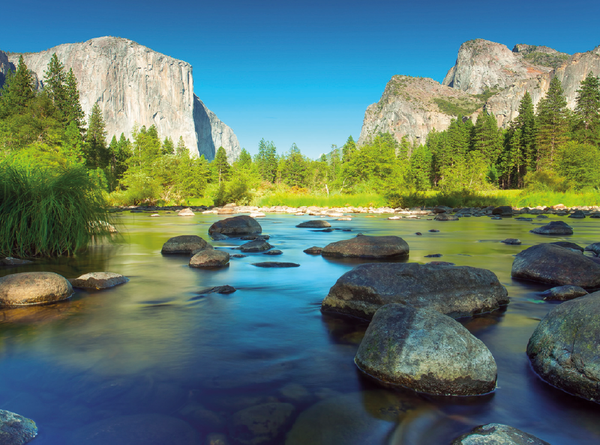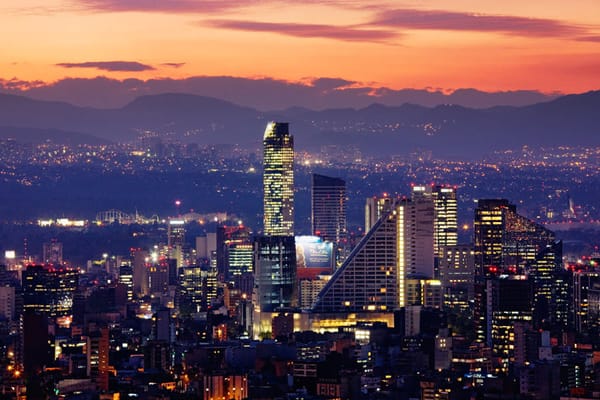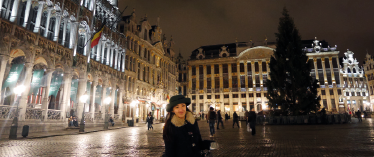The Unforgettable, amazing Oaxaca...
Lost yourself in paradise alongside Aditya Narayanan in this paradise

Holidays in Mexico are stereotypically presented as being all about that beach. From Cancun to Tijuana (and Acapulco), the golden sands and azure seas are well trodden by the average foreign tourist. With glorious sunshine all year and relatively calm and clear water, it is the perfect place to laze about aimlessly for a week or five. As it happens, this is a rather mainstream opinion, and all have become the epitome of the term tourist trap; a deluge of retirees looking for a lazy getaway and 20-somethings looking for a bacchanalian experience.
The counterpoint to this idea is Oaxaca, the capital city of the eponymous state located in the middle of the Valles Centrales, a low mountain range forming a vertebral ridge down the south of Mexico. For a city that is not even in the largest 50 in the country, it has had a surprising political influence, producing two of the most notable presidents in the history of Mexico: Benito Juarez and Porfirio Diaz. The former was without doubt the most influential president of modern Mexico. Apart from being the first president of indigenous heritage, he achieved the separation of church from state affairs and was a champion of equality for the indigenous people of Mexico. As you can imagine, he is considered a hero. That the city also produced the controversial, authoritarian president Diaz (whose signature catchphrase was “pan o palo”: bread or a beating), however, receives much less coverage. Nevertheless, politics is not the reason Mexicans flood here – for one, it is a heaven for foodies.
It all starts with the mole.
Mole itself just means sauce in the Nahuatl language, its most famous incarnation being the chocolate based mole poblano from the city of Puebla. But Oaxaca is not content with just one mole. To it, seven (yes, seven!) is a much more suitable number. And these sauces come in a tantalising variety of colour and flavour. The mole amarillo is a light, sweet sauce made using tomatillo, and resembles a more flavourful tomato soup. While my personal favourite is the thick, dark brown mole negro, with the bitter hints of chocolate complementing a chilli kick and a smoky aftertaste. The whole gamut is available in the Mercado 20 de Noviembre, a complex similar in concept to the hawker centres in Singapore and Malaysia.
Unfortunately a limited timeframe means I do not get to taste more than two moles, at least partly because Oaxaca has far more to offer than just mole, as I find out to my delight an hour before taking the night bus out of the city. In the same aforementioned food market, tucked away in a corner so nondescript that I only found it while looking for the exit, is an isolated hall, tinged a gloomy yellow from lighting overhead. Vendors line up to offer fresh meat and vegetables sold by weight and grilled before your eyes. Smoke and steam swirls around the room, obscuring most of the action and adding to the air of seclusion and mystery. It is as if only those who are able to find this section are worthy of sampling what it has to offer, allowing the few lucky ones to leave with the feeling of having found their own secret treasure.
It ends with chapulines.
Small, red and seemingly oblong, they lie in mounds on carts at the roadside, having the appearance of dried red chillies. These are very popular amongst Mexicans, not to mention Oaxaceños: grasshoppers fried in a mix of chilli, salt and lime. It takes me two days to muster the courage to try
one, and the savoury crunchiness brings to mind savoury trail mix. For an instant I can see the appeal; the popcorn-esque quality that allows one to absentmindedly munch on for hours without concept of quantity. And then aftertaste hits me like a sledgehammer; an indescribable flavour I have never experienced before, and still have trouble wrapping my head round which requires several gulps of water to wash out. Although worth trying once, I won’t be going for a repeat any time soon.
Fans of alcohol might also find it interesting to know that the state of Oaxaca is the largest producer of mezcal in the country. Although much maligned as the poor cousin of tequila (a myth, for tequila is just a specific kind of mezcal from the state of Jalisco), mezcal distilling culture has experienced a huge upsurge over the large few decades and is subject to the same rigour in its processing. Now, mezcalerias and production houses are a frequent sight on side of the highways, and show a refinement of flavour to rival a whisky or brandy distillery. A stop in a distillery, many of which are family run enterprises around nearby Matatlan, can see you sample as many as ten flavours ranging including coffee cream, mint and the mysterious ‘aphrodisiac’.
Leaving aside all the culinary pleasures and intoxicants, Oaxaca itself is a picturesque, colonial town, arranged in the square grid layout typical of most North American towns. Buildings are simple cuboids in Lego-brick colours of red, yellow, blue and green, with few elaborate touches short of the occasional wrought iron window rail. The main square (or Zocalo, as it is called here) is abuzz with the sound of buskers crooning Mexican folk songs or participating in street theatre and young lovers taking advantage of the shaded areas to watch the world go by, seemingly oblivious to the forest of white tents marking the territory of yet another Occupy-style protest happening in Mexico. Winding through the narrow, crowded yet immaculate side streets brings light to an area teeming with contradictions. The rustic, simple facades of the store fronts disguise plush boutiques and hipster cafes, where artisanal gelato and luxury handbags being sold either side of hole-in-the-wall Mexican street food!
Trips to the surrounding region offer jaw dropping vistas and hikes into the mountainous terrain are popular. Some indication of what to expect is available at the nearby ruins Monte Alban, perched atop a hill overlooking Oaxaca city, where the multi-coloured mat of the town buildings offers a nice contrast to the bottle green and dusty orange of the mountains. The jewel of the landscape however, is Hierve el Agua.
Looking at it feels like time has come to a standstill, with a foaming, convulsing body of water pouring over a cliff without actually moving. It is thousand years of work of a heavily mineralised natural spring flowing gently over the wall of rock, making regular deposits to form structures similar to stalactites. Above the cliffs, small pools formed by the spring gleam a blue so bright it looks like a Pixar animation, while happy tourists take a dip in its ‘healing waters’.
In truth, I could have written four or five separate articles about Oaxaca at least, focusing on each of its fine cultural heritage, exquisite local cuisine, spectacular geography and general ambience. I still feel a small tinge of regret I did not spend longer than three days there and I suspect even two weeks may not have been enough to satisfy me. In hindsight though, perhaps this is a good thing, for now I have the perfect excuse to return.









